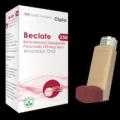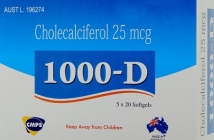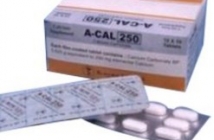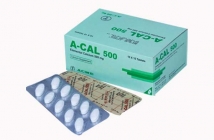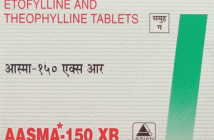Home / Categories / BECLATE-200 ROTACAPS
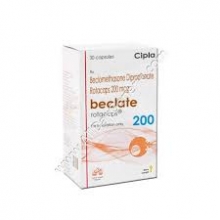
BECLATE-200 ROTACAPS
(1)
BECLOMETHASONE-200MCG
CORTICOSTEROIDS
CIPLA India Limited
Product Details
Beclomethasone Dipropionate
A to Z Drug Facts
Beclomethasone Dipropionate
Action
Indications
Contraindications
Route/Dosage
Interactions
Lab Test Interferences
Adverse Reactions
PrecautionsPatient Care Considerations
Administration/Storage
Assessment/Interventions
Patient/Family Education
(BEK-low-METH-uh-zone die-PRO-pee-oh-NATE)BecloventAerosol: 42 mcg/actuationBeconaseAerosol: 42 mcg/actuationBeconase AQSpray: 0.042% beclomethasone dipropionate, monohydrateQVARAerosol: 40 mcg/actuationAerosol: 80 mcg/actuationVancenaseAerosol: 42 mcg/actuationVancenase PockethalerAerosol: 42 mcg/actuationVancenase AQSpray: 0.084% beclomethasone dipropionate, monohydrate. 100 mg suspension/actuation Alti-Beclomethasone, Beclodisk, Becloforte, Beconase Aq., Gen-Beclo Aq., PropadermClass: Corticosteroid
 Action Has potent anti-inflammatory effect on respiratory tract and in nasal passages.
Action Has potent anti-inflammatory effect on respiratory tract and in nasal passages.
 Indications
Indications
Oral inhalation: QVAR: Maintenance prophylactic treatment of asthma; asthma patients requiring systemic corticosteroid administration where adding an inhaled corticosteroid may reduce or eliminate need for systemic corticosteroids.
 Contraindications
Contraindications
Oral inhalation:
Primary treatment of status asthmaticus or acute episodes of asthma; systemic fungal infections; positive sputum cultures of Candida albicans or Aspergillus niger.
 Route/Dosage
Route/Dosage
Bronchial Asthma
Children (6 to 12 yr): PO inhalation 1 to 2 inhalations tid to qid or 4 inhalations bid. Do not exceed 10 inhalations/day.
Adults and children (12 yr and older): PO QVAR: If previous therapy consisted of bronchodilators alone, start with 40 or 80 mcg bid (max dose, 320 mcg bid); if previous therapy consisted of inhaled corticosteroids, start with 40 to 160 mcg bid (max dose, 320 mcg bid).
Children (5 to 11 yr) Aerosol actuation QVAR: If previous therapy consisted of bronchodilators alone or inhaled corticosteroids, start with 40 mcg twice daily (max dose, 80 mcg bid).
 Interactions None well documented.
Interactions None well documented.
 Lab Test Interferences None well documented.
Lab Test Interferences None well documented.
 Adverse Reactions
Adverse Reactions
CNS: Headache; lightheadedness; agitation; depression; mental disturbances. EENT: Nasal bleeding; sneezing; throat and nasal irritation, burning or stinging; hoarseness or dysphonia; nasal, laryngeal, or pharyngeal fungal infection. GI: Dry mouth; dyspepsia; nausea; vomiting. METABOLIC: Suppression of hypothalamic-pituitary-adrenal (HPA) function. RESPIRATORY: Coughing; wheezing; pulmonary infiltrates. OTHER: Hypersensitivity reaction with rash, urticaria, angioedema, and bronchospasm; facial and tongue edema; pruritus; wheezing; dyspnea; acneiform lesions; atrophy; bruising; localized Candida or Aspergillus infections; cushingoid features; growth velocity reduction in children; weight gain.
 Precautions
Precautions
Pregnancy: Category C. Lactation: Undetermined. Because other corticosteroids are excreted in human milk, use caution. CHILDREN: Safety and efficacy in children under 5 yr not established. Oral corticosteroids may suppress growth in children and adolescents, particularly with higher doses over extended periods. Hypersensitivity: Immediate and delayed hypersensitivity reactions have occurred. Acute asthma: Not indicated for relief of bronchospasm. Fungal infections: Antifungal treatment or discontinuance of corticosteroid therapy may be necessary. Immunology: Patients receiving immunosuppressant agents are more susceptible to infections than healthy adults. If a patient is exposed to measles or chickenpox, appropiate prophylaxis and treatment may be indicated. Systemic effects: Use cautiously in patients taking daily or alternate-day prednisone; may increase likelihood of HPA suppression. Exceeding recommended dose may cause systemic effects.
PATIENT CARE CONSIDERATIONS
 Administration/Storage
Administration/Storage
- May be administered alone or with concomitant systemic steroids.
- Shake inhaler well before administration.
- Before oral inhalation administration, give patient a drink of water to moisten throat. Place inhaler mouthpiece 2 fingerbreaths away from patient's mouth. Tilt patient's head back slightly. Instruct patient to take a slow, deep breath while inhaler is being activated and to hold breath for 5 to 10 sec and then breathe slowly. A spacing device (eg, Aerochanger ) may be used to enhance delivery of medication. Have patient rinse mouth with water after inhalations are complete.
- Before nasal inhalation, instruct patient to blow nose gently to clear nasal passages. A topical decongestant may be used 5 to 10 min before administration to ensure adequate tissue penetration. Nasal lavage with saline also may help remove secretions. Clean outer portion of nose with a damp tissue. Wash hands with soap and water and dry them.
- Insert nozzle into patient's nostril. Use finger to keep other nostril closed. Instruct patient to inhale while you activate medication. Repeat with other nostril.
- If patient is also receiving bronchodilators by inhalation, administer bronchodilator before beclomethasone to enhance penetration of latter drug into bronchial tree.
- Store at room temperature; do not refrigerate.
- Do not store or use near open flame or discard in incinerator.
 Assessment/Interventions
Assessment/Interventions
- Obtain patient history, including drug history and any known allergies, particularly to other corticosteroids.
- If change is made from systemic (oral) to inhaled or intranasal corticosteroids, observe patient carefully for signs of steroid withdrawal (eg, nausea, fatigue, dizziness, hypotension, depression, joint and muscle pain). Notify health care provider if these signs occur. Deaths caused by adrenal insufficiency have occurred during and after transfer to aerosol corticosteroids.
- Have epinephrine 1:1000 available for immediate- or delayed-hypersensitivity reaction.
- Persistent nasopharyngeal irritation may be an indication for discontinuing beclomethasone.
OVERDOSAGE: SIGNS & SYMPTOMS Hypercorticoidism, adrenal suppression
 Patient/Family Education
Patient/Family Education
- Review proper administration technique. Have patient demonstrate technique.
- Explain that effects of drug are not immediate. Benefit requires daily use as instructed and usually occurs after several days. Full relief may take 1 to 2 wk. Caution patient not to continue intranasal therapy longer than 3 wk if there is no improvement.
- Instruct patient not to exceed prescribed dose.
- Advise patient that dosage will be tapered slowly before stopping.
- Remind patient to wash inhaler daily with warm water and dry thoroughly.
- Tell patient to store inhaler at room temperature, away from excessive heat or cold; do not refrigerate.
- Instruct patient to use with caution if sores develop or injuries occur in nasal passages. Drug may prevent or slow proper healing.
- Warn patient not to use for acute severe asthma attack requiring rapid relief.
- Instruct patient to carry Medi-Alert card if experiencing acute severe asthma attacks requiring rapid systemic relief.
- Advise patient to report the following symptoms to health care provider: sore throat or mouth, cough, dry mouth, rash, facial swelling, difficulty breathing with oral inhalation therapy, sneezing, nasal irritation, or nosebleed with intranasal therapy.
- Inform patient to report any fungal infection of the nose or throat to health care provider.
- If patient is being converted from oral steroids to inhaler/nasal steroids, review signs and symptoms of adrenal insufficiency, which may occur days or weeks after conversion is complete.
- Warn patient not to take OTC medications without consulting health care provider.
- Advise patient to avoid exposure to chickenpox or measles, and to seek medical advice if exposed.
Books@Ovid
Copyright © 2003 Facts and Comparisons
David S. Tatro
A to Z Drug Facts
